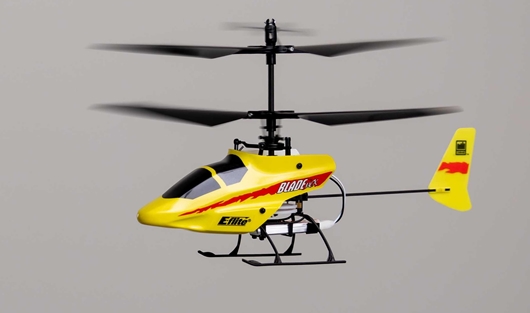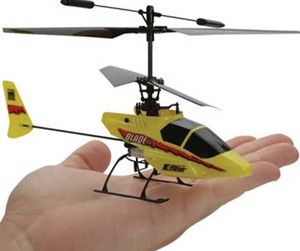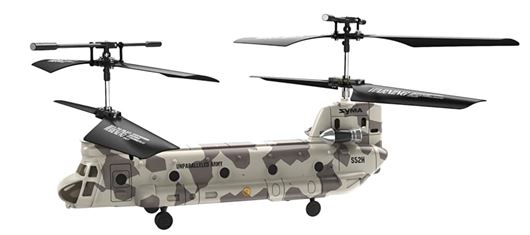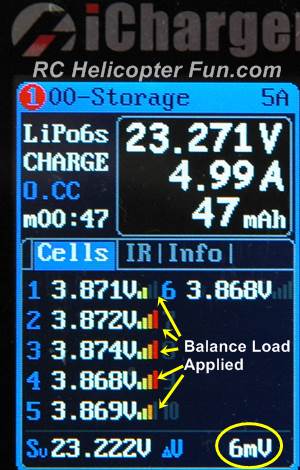Coaxial RC Helicopters
The Masters of Stability & Efficiency
by John Salt - Last Updated May 2025
I still think micro coaxial RC helicopters remain to be one of the most amazing and fun products to have hit the RC market in years.
Yes, they have been overshadowed by quad-rotors and fixed pitch single rotor helicopters with electronic self-level stabilization & altitude hold, both as good entry level offerings for beginners; but nothing is as efficient and stable as a coaxial.
The cost is low, the fun is high. They work well for just about every age group and ability. They are the perfect introduction for first time flyers to the RC hobby as I've already mentioned on my "RC Helicopters For Beginners & Kids" page; yet experienced RC heli and airplane pilots continue to find them enjoyable for some easy going indoor flying when we just need a bit of a "flying fix" and can't venture outside.
Even though it was discontinued a good number of years ago, I still enjoy flying my coaxial Blade CX3 indoors during the winter months for a little bit of "scale" fun. In the hundreds of flights I've had with it, it continues to work and fly so well.
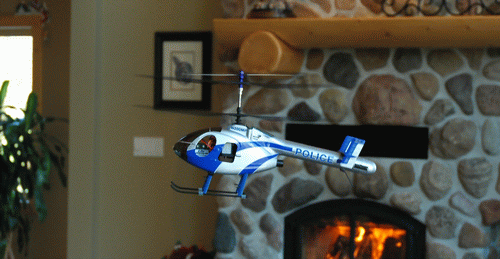 Flying My Coaxial Scale MD520N Indoors On A Cold Winter Sunday Morning - Better Than A Cup Of Coffee :-)
Flying My Coaxial Scale MD520N Indoors On A Cold Winter Sunday Morning - Better Than A Cup Of Coffee :-)If you are interested in RC helicopters but are a little intimidated by the complexity of single rotor fixed pitch hobby grade helis; coaxials are a good solution that are easy to fly and give long flight times.
If your main reason for thinking of getting into the hobby is because of your fascination with helicopters in general, micro coaxials are the obvious easy fling choice over micro quad-rotors that look nothing like a conventional helicopter.
Even though coaxials are easy to fly, many of the skills you learn on a hobby grade coaxial RC helicopter are somewhat transferable to single rotor hobby grade RC helis. This holds especially true for understanding the control reversals when practicing nose in hovers .
What Makes Coaxial RC Helicopters So Special?
Efficiency & Stability!
Unlike a conventional single rotor helicopter that only has one main rotor and a tail rotor to counteract the torque produced, coaxial helicopters have two main rotors stacked on top of each other.
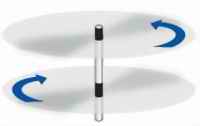
Having two rotors spinning in opposite directions at the exact same speed produces equal amounts of torque from both.
Since the torque is equal, but occurring in opposite directions, it essentially cancels out (a state of torque equilibrium), and the helicopter won't yaw (turn).
No additional energy is therefor needed to power a tail rotor to counter the torque giving improved efficiency; which on an electric powered RC helicopter equates to longer flight times.
Having two spinning main rotors also adds rotor mass which produces a significant gyroscopic effect that helps stabilize coaxial RC helicopters.
In short – no other design is as efficient or stable. Remember me saying on the home page that all helicopters are unstable? Well, coaxial’s break this rule - unless of course your coaxial heli encounters the infamous Toilet Bowl Effect .
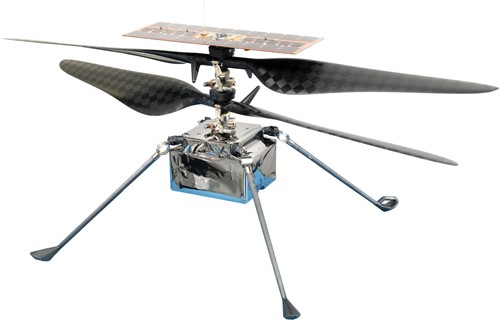 Nasa's Ingenuity Coaxial Mars Helicopter
Nasa's Ingenuity Coaxial Mars HelicopterIt should therefor come as no surprise, NASA also decided to use the coaxial helicopter design for their very first Mars helicopter named the Ingenuity. Mars with an atmosphere 100 times thinner than Earth's, an efficient coaxial was the obvious choice.
How Do Coaxial RC Helicopters Work?
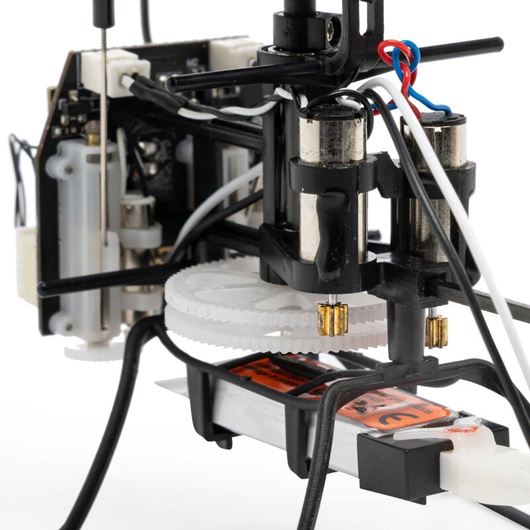 Two Motors & Two Main Gears Power The Upper & Lower Rotors
Two Motors & Two Main Gears Power The Upper & Lower RotorsAll micro coaxial RC helicopters work the same way.
They have two separate electric motors that drive each rotor. You can see this in the picture to the right.
Each motor drives its own main gear, which in turn spins its own main rotor shaft.
The outside shaft that powers the lower rotor is hollow and the inner shaft that powers the upper rotor is spinning inside the lower hollow shaft – obviously in the opposite direction.
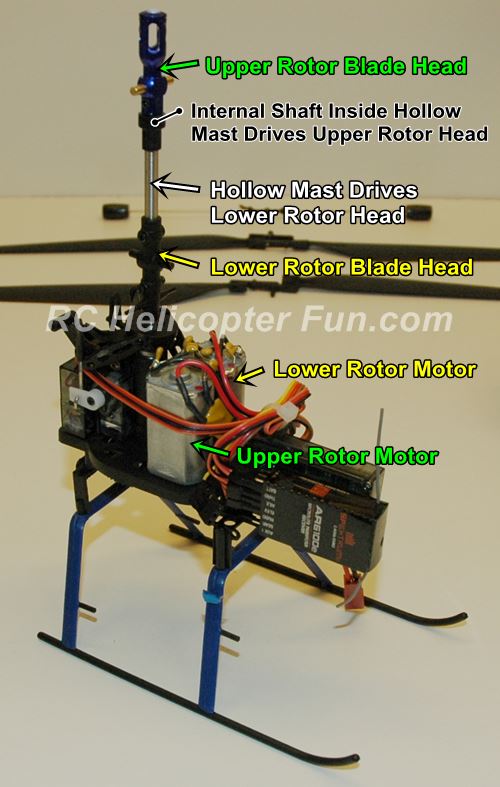 Coaxial RC Helicopter Mechanical Components
Coaxial RC Helicopter Mechanical ComponentsThese two motors control both the lift of the helicopter by speeding up and slowing down. They also control the turning or yaw movement of the heli just like a tail rotor would on a single rotor helicopter. How?
If one rotor is slowed down a bit, and the other is sped up, the one that is turning faster will produce more reactive torque than the slow one and the heli will turn/yaw, just as if a tail rotor turn command was given.
This yaw movement is controlled by a special electronic mixing board that will seamlessly mix the speed of both the motors to allow the required turn rate while also making sure the overall lift remains the same.
Coaxial RC Helicopter Directional Control Methods
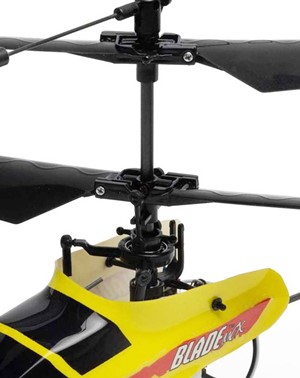 Blade mCX Swashplate On Lower Rotor
Blade mCX Swashplate On Lower RotorTrue Cyclic
Yes, some hobby grade micro coaxial RC helicopters have a swashplate meaning they have true cyclic directional control (forward, backward, left, right)
This is rare these days because they cost more to produce.
Moreover, with electronic stabilization & electronic altitude hold on some beginner micro fixed pitch single rotor helicopters getting close to the amazing stability a micro coaxial can produce (such as the single rotor C129), manufacturers aren't offering coaxials with cyclic anymore.
With that said, Blade brought back the ever popular mCX and it remains to this day, the most popular and best selling beginner RC helicopters of all time. Here's my full review of the mCX Anniversary Edition and why it's such a great little coaxial helicopter.
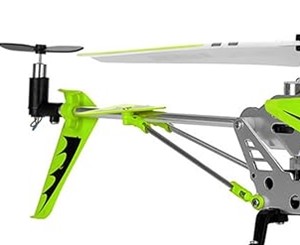 Horizontal Tail Fan Pitches Heli Forward & Backward
Horizontal Tail Fan Pitches Heli Forward & BackwardHorizontal Tail Fan Pitch Control
Most small coaxial RC helicopters don't have a swashplate like the mCX and therefor don't have cyclic control.
Instead, they use the horizontal tail fan method to pitch the heli slightly forward or backward by blowing the tail up (heli moves forward) or down (heli moves backward).
NOTE! This tail rotor is horizontal (blows air up and down) not vertical like most helicopter tail rotors that blow sideways to control yaw.
These little horizontal tail rotors do offer some directional control, but it's vague and slow at best. There is also no roll (left/right) movement control, only forward & backward.
Also forget about flying a coaxial RC helicopter with a horizontal tail rotor/fan if there is even a light breeze blowing. The tail fan simply can't provide enough directional control to cope with the slightest amount of wind.
Even cyclic control on a small fixed pitch coaxial RC helicopter isn't great outdoors in wind, but it can at least handle a slight breeze.
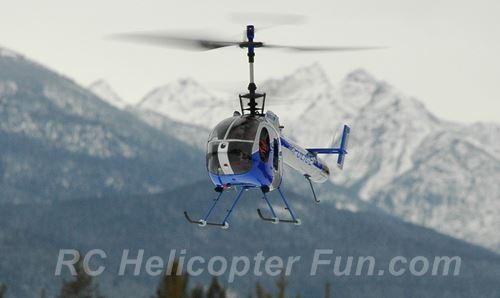 Coaxial RC Helicopter With True Cyclic Flying Outdoors In A Light Breeze
Coaxial RC Helicopter With True Cyclic Flying Outdoors In A Light BreezeCoaxial RC Helicopter Recommendations
No question, the Blade mCX Anniversary Special Edition micro coaxial helicopter is #1 on the recommend list.
I just can't say enough good about it if you want an easy to fly RC helicopter for tight indoor spaces. Control precision and resolution is unmatched - period!
The Blade mCX is the only decent 4 channel micro coaxial RC helicopter on the market that uses proper cyclic control.
It's robust, looks good, is easy to see, has good parts support from most local RC hobby shops or online shops along with some interesting OE and aftermarket upgrade parts.
Next up would have to be the popular SYMA S107.
Like the Blade mCX, the SYMA S107 has been around for many years and constantly gets good reviews and feedback from newbies and experienced RC helicopter enthusiasts alike.
The S107 doesn't use cyclic control however and relies on a horizontal tail fan to pitch it forward and backwards slightly. No it's not great control; but it's still a fun coaxial RC helicopter flying experience. If you want a decent small collective pitch RC helicopter without spending much, this one is hard to beat.
Just don't expect the SYMA coaxial to produce the same level of engagement or control precision that the Blade mCX does.
Coaxial Tandem Rotors
The SYMA S52H is a personal favorite and one I would definitily recommend, but not as your first RC heli. Get some practice on one of the previously mentioned coaxials first.
Like all scale RC helicopters, the little S52H is fairly fragile and won't handle much abuse from a newbie who is learning. After you learn the basics however on a standard micro coaxial heli, these tandems are a great next bird, and a total hoot to fly.
I've always been intrigued with tandem rotor coaxials and how they work using fore / aft rotor lift variation to induce forward/backward movement. It's simple, effective and mimics that wonderful tilt of the entire fuselage when transitioning from a hover to forward flight; just like the full size Boeing CH-47 Chinook.
 The mCX Tandem Rescue Was So Fun
The mCX Tandem Rescue Was So FunFor those that remember and loved Blade's mCX Tandem Rescue which was discontinued a number of years ago; the Syma S52H is very similar.
It's so nice to see a small and good quality coaxial tandem rotor RC helicopter being offered again. Just wish it was in that bright yellow Canadian SAR livery :)
Micro Coaxial vs Micro Quadrotor
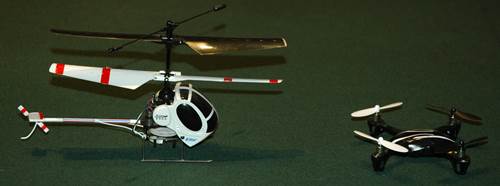 Micro Coaxial vs. Micro Quadrotor - Who's the winner?
Micro Coaxial vs. Micro Quadrotor - Who's the winner?I have been hearing a fair number of people stating micro coaxial RC helicopters are not going to be around for much longer because of micro quad-rotors.
I for one don't agree with that at all. Not because I dislike micro quads, I feel they are also a very good first time RC helicopter as well; but the one undeniable fact is they look nothing like a conventional helicopter.
I personally got into this hobby because I was always fascinated by real helicopters and I know many other people who continue to get into the hobby for the exact same reason. If you fall into that category yourself and want something easy and fun to fly, a micro coaxial RC heli still is, and will remain to be a good RC helicopter to start out on.
To conclude my little coaxial helicopter write-up, I can't resist showing this video of a full size single seat turbine powered coaxial helicopter. I can't think of many "big kids" who would not want this rascal parked in their garage.
